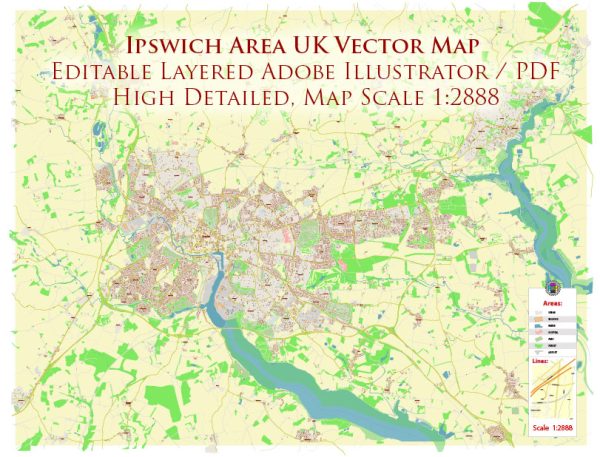The history of urban development in Ipswich, UK, is rich and diverse, reflecting the town’s long and significant history. Ipswich is one of England’s oldest towns, with a history that dates back to the Anglo-Saxon period. Here is an overview of the key phases in Ipswich’s urban development:
- Anglo-Saxon Period (7th-11th centuries):
- Ipswich has its roots in the Anglo-Saxon era, and it was an important trading center during this time.
- The town’s street plan, particularly the layout of the waterfront along the River Orwell, still shows signs of its medieval origins.
- Medieval Period (11th-15th centuries):
- Ipswich continued to thrive during the medieval period, becoming an important wool trading town.
- St. Mary-le-Tower Church and St. Lawrence Church are examples of medieval architecture that still stand in the town today.
- The medieval street pattern, with narrow, winding streets, is still evident in parts of the town center.
- Tudor and Stuart Periods (16th-17th centuries):
- During the Tudor and Stuart periods, Ipswich experienced further growth and development.
- Christchurch Mansion, a Tudor mansion, was built during this time and has become a significant historical site and museum.
- Industrial Revolution (18th-19th centuries):
- The Industrial Revolution brought significant changes to Ipswich, as it did to many other towns in the UK.
- The waterfront area saw industrial developments, including warehouses and factories, to support the growing trade and manufacturing activities.
- Victorian Era (19th century):
- The Victorian era marked a period of expansion and modernization for Ipswich.
- The arrival of the railway in the mid-19th century enhanced transportation links, contributing to economic growth.
- Victorian architecture is visible in various parts of the town, with notable buildings such as the Cornhill and the Great White Horse Hotel.
- 20th Century:
- Ipswich continued to evolve throughout the 20th century, with some areas experiencing redevelopment and modernization.
- The post-war period saw the construction of new housing estates to accommodate a growing population.
- Recent Developments:
- In recent decades, Ipswich has undergone urban renewal and regeneration projects, aiming to enhance the town’s infrastructure, amenities, and overall quality of life.
- The waterfront area has been a focal point for redevelopment, with new residential, commercial, and cultural developments.
Today, Ipswich stands as a blend of its rich historical past and modern urban amenities, making it a town that reflects the layers of its diverse history in its architecture, streets, and community.


 Author: Kirill Shrayber, Ph.D.
Author: Kirill Shrayber, Ph.D.